City Sweetheart |
||||||||||||||||||||||||||||||||||
 |
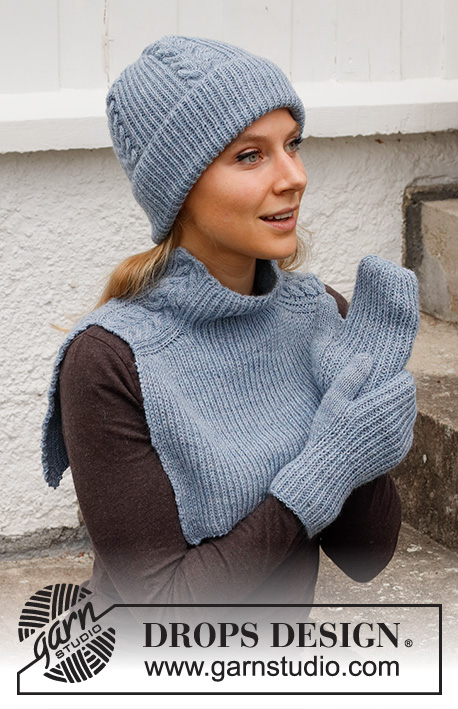 |
|||||||||||||||||||||||||||||||||
Knitted hat, mittens and neck warmer in DROPS Nord. Piece is knitted with cables, Fishermans rib and saddle shoulder increase.
DROPS 214-29 |
||||||||||||||||||||||||||||||||||
|
------------------------------------------------------- EXPLANATION FOR THE PATTERN: ------------------------------------------------------- GARTER STITCH (back and forth): Knit all rows. 1 ridge vertically = knit 2 rows. PATTERN: Hat: See diagrams A.1 to A.5. Mittens: See diagrams A.6 and A.7. Neck warmer: See diagrams A.1 and A.8. INCREASE TIP-1 (evenly): To calculate how to increase evenly, count the stitches to be increased (e.g. 11 stitches) and divide this number by stitches of increases to be done (e.g. 4) = 2.8. In this example increase by making 1 yarn over after approx. every 3rd stitch. On next round work yarn overs twisted to avoid holes. INCREASE TIP-2 (applies to mittens): Increase 1 stitch by making 1 yarn over. On next row work yarn overs twisted to avoid holes. Work the new stitches in stocking stitch. INCREASE TIP-3: Increase on each side of the 21 stitches for shoulder. Number of stitches for shoulder is always 21 stitches, and stitches are increased on the front piece and back piece. Increase 4 stitches on every round, increase 1 stitch on each side of A.8 as follows: BEFORE A.8: The new stitch will be twisted, leaning towards the right. Use left needle to pick up strand between 2 stitches from the round below, pick up strand from behind and knit stitch in front loop. AFTER A.8: The new stitch will be twisted, leaning towards the left. Use left needle to pick up strand between 2 stitches from the round below, pick up strand from the front and knit stitch in back loop. CAST-OFF TIP: To avoid a tight cast-off edge you may use a larger needle size. If this also is too tight, work a 1 yarn over after approx. every 4th stitch while casting off (cast off yarn overs as regular stitches). ------------------------------------------------------- START THE PIECE HERE: ------------------------------------------------------- HAT - SHORT OVERVIEW OF THE PIECE: Worked in the round on circular needle, bottom up. Switch to double pointed needles when needed. HAT: Cast on 120 stitches on circular needle size 3 mm with Nord. Knit 1 round. Then work A.1 in the round for 15 cm. REMEMBER THE KNITTING TENSION. Turn piece so that right side of piece is on the inside of hat, and work in opposite direction (so that right side of folding edge is outwards when folded up when hat is finished). Work next round as follows: * Knit the first 11 stitches and increase 4 stitches evenly - read INCREASE TIP-1, work A.2 (= 19 stitches) *, work from *-* 4 times in total = 136 stitches. Now work pattern as follows: * A.3 (= 15 stitches), A.2 *, work from *-* 4 times in total. Continue in the round like this until A.2 measures approx. 26 cm, finish after a whole repetition of A.3. Work A.4 over A.3, and work A.5 over A.2. When diagrams have been worked vertically, there are 32 stitches on round. Knit 1 round. Work 1 round where all stitches are knitted together 2 by 2 = 16 stitches. Cut the yarn and pull it through the remaining stitches, tighten together and fasten. Hat measures approx. 34 cm (= 26 cm with 7 cm fold at the bottom). ------------------------------------------------------- MITTENS - SHORT OVERVIEW OF THE PIECE: Worked in the round on double pointed needles. RIGHT MITTEN: Cast on 42-46 stitches on double pointed needles size 2.5 mm with Nord. Knit 1 round. Then work pattern A.6 in the round. When piece measures 4 cm, switch to double pointed needles size 3 mm. Continue with pattern as before. When piece measures 5-6 cm - adjust so that next round is a round that is 1st round in A.6, work A.7 over the first stitch on round, continue the remaining stitches as before. When A.7 has been worked 1 time vertically, there are 54-58 stitches on needle, and 13 stitch for thumb gusset (stitches from A.7). Continue to work without increase until piece measures 10-12 cm. On next round slip the 13 thumb gusset stitches on a stitch holder, continue in the round with pattern as before and cast at the same time on 1 new stitch on needle over stitches on stitch holder = 42-46 stitches. Work until mitten measures 22-25 cm (approx. 2 cm remain until finished measurements, try the mitten on and work to desired length). Work next round as follows: Knit 1, knit 2 and 2 stitches together until stitch 1 stitch remains, knit last stitch on round and first stitch on next round together = 21-23 stitches. Knit 2 rounds. Knit stitches together 2 by 2 until 1 stitch remains, knit 1 = 11-12 stitches. Knit 1 round. Knit stitches together 2 by 2 until 1 stitch remains, knit 1 = 6-6 stitches. Cut the yarn and pull it through the remaining stitches, tighten together and fasten. Mitten measures approx. 24-27 cm from top and down. THUMB: Slip the 13-13 thumb gusset stitches from stitch holder back on double pointed needles size 3 mm and pick in addition up 2 stitches behind thumb = 15-15 stitches. Work in stocking stitch in the round until the thumb measures 5½-6½ cm (approx. ½ cm remain until finished measurements, try the mitten on and work to desired length). Knit stitches together 2 by 2 until 4 stitches remain on round. Cut the yarn and pull it through the remaining stitches, tighten together and fasten. LEFT MITTEN: Cast on and work the same way as right mitten. ------------------------------------------------------- NECK WARMER - SHORT SUMMARY OF PIECE: Worked in the round on circular needle until increase is done. Then cast off stitches for shoulder, and work front piece and back piece back and forth separately. NECK WARMER: Cast on 108-116-124 stitches on circular needle size 3.5 mm with Nord. Knit 1 round. Then work pattern as follows: * Work A.8 (= 21 stitches), A.1 over the next 32-36-40 stitches, work first stitch in A.1 *, work from *-* 1 more time on round. Continue in the round like this until piece measures 8 cm, insert 1 marker here, now measure the piece from here. Now increase 1 stitch in each side of every A.8 - read INCREASE TIP-3. Increase like this every other round 28-32-36 times in total = 220-244-268 stitches. Work the new stitches in A.1. When all increases are done, work next round which is next to last round in A.1 as follows: Cast off the first 21 stitches for shoulder, work the next 89-101-113 stitches (= back piece), cast off the next 21 stitches for shoulder, work the last 89-101-113 stitches (= front piece). FRONT PIECE: Continue back and forth with pattern as before but work outermost stitch in each side in garter stitch. When piece measures 23-25-27 cm from marker, cast off with knit over Fisherman’s rib/knit and purl over purl - read CAST-OFF TIP. Cut and fasten the yarn. BACK PIECE: Work as on front piece. |
||||||||||||||||||||||||||||||||||
Diagram explanations |
||||||||||||||||||||||||||||||||||
|
||||||||||||||||||||||||||||||||||

|
||||||||||||||||||||||||||||||||||

|
||||||||||||||||||||||||||||||||||

|
||||||||||||||||||||||||||||||||||
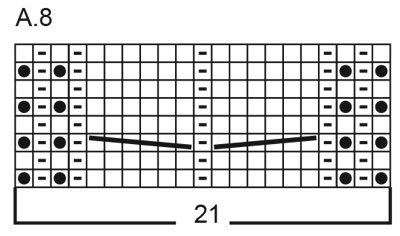
|
||||||||||||||||||||||||||||||||||
|
Have you made this or any other of our designs? Tag your pictures in social media with #dropsdesign so we can see them! Do you need help with this pattern?You'll find tutorial videos, a Comments/Questions area and more by visiting the pattern on garnstudio.com. © 1982-2024 DROPS Design A/S. We reserve all rights. This document, including all its sub-sections, has copyrights. Read more about what you can do with our patterns at the bottom of each pattern on our site. |
||||||||||||||||||||||||||||||||||












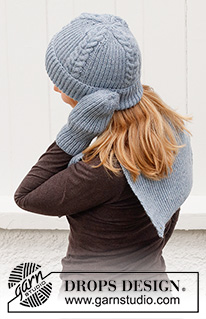
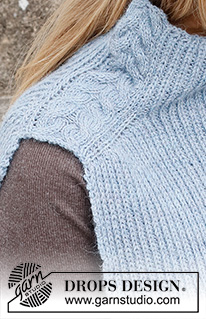



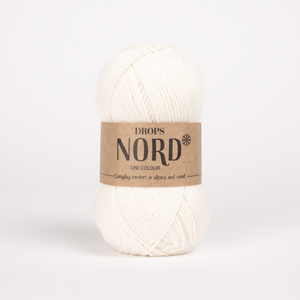
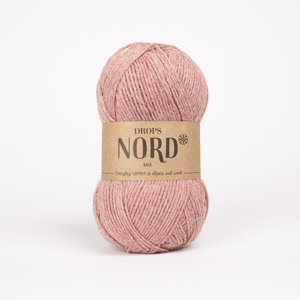












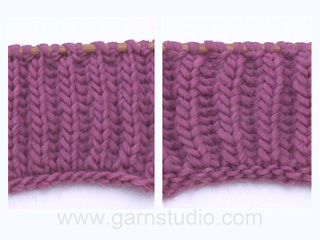



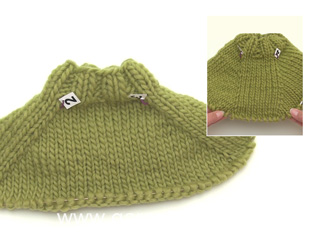








































Comments / Questions (27)
Die Mütze sieht einfach toll aus. Bei der Anleitung verstehe ich nicht, was damit gemeint ist A.4 über A.3 und A.5 über A.2 stricken. Da ich Anfänger bin ist mir das unklar, bitte helfen Sie mir.
04.02.2024 - 12:52DROPS Design answered:
Liebe Anastasia, wenn die Arbeit ca 26 cm misst stricken Sie dann nicht mehr die Diagramme A.2 und A.3 aber anstatt (A.3, A.2) stricken Sie (A.4 (= 15 Maschen), A.5 (19 Maschen)) x 4; es wird in A.5 abgenommen. Viel Spaß beim stricken!
05.02.2024 - 09:25Felskrivet: det står att halsvärmaren ska stickas på strumpstickor, men i beskrivningen står rundstickor. Rätta detta.
18.11.2023 - 13:40Guten Tag. Ich stricke die Mütze City Sweetheart und hänge bei Diagramm A.5. Ich verstehe nicht, warum A.5 mit einer Patentreihe begonnen wird. Der Rapport A.3 endet mit einer Patentreihe. Demnach müsste A.5 wieder mit einer einfachen rechts/links-Reihe begonnen werden, da sonst 2 Patentreihen aufeinander folgen würden. Können Sie mir hier helfen? Vielen Dank!
16.11.2023 - 02:13Guten Tag. Ich stricke die Mütze City Sweetheart und hänge bei Diagramm A.5. Ich verstehe nicht, warum A.5 mit einer Patentreihe begonnen wird. Der Rapport A.3 endet mit einer Patentreihe. Demnach müsste A.5 wieder mit einer einfachen rechts/links-Reihe begonnen werden, da sonst 2 Patentreihen aufeinander folgen würden. Können Sie mir hier helfen? Vielen Dank!
16.11.2023 - 02:12DROPS Design answered:
Liebe Ursel, danke für den Hinweis, unser Design Team wird das mal schauen, ich würde dann die 1. Reihe A.5 überspringen und direkt die 2. Runde stricken (bis eine Korrektur erfolgt). Viel Spaß beim stricken!
16.11.2023 - 10:24Pour l'échantillon j'ai essayé avec des aiguilles no 3 rien ne fonctionne. 3.5 non plus. Est ce que ce modèle se tricotte avec le fil simple ou double? Pourtant j'ai le fil drops nord.
13.01.2022 - 22:19DROPS Design answered:
Bonjour Maryse, ce modèle se tricote bien avec 1 seul fil Nord. Vous pouvez essayer de laver/bloquer votre échantillon et vérifier à nouveau les mesures après séchage complet, vous pourrez ainsi vérifier si votre tension est bonne ou si vous devez changer d'aiguilles. Bon tricot!
14.01.2022 - 08:52Bonjour \r\nPour un bonnet à revers tricoté sur aiguille circulaire , Si je retourne le revers comme mentionné, POUR L\'ÉCHANTILLON. Tourner l\'ouvrage pour que l\'endroit soit maintenant à l\'intérieur du bonnet et tricoter dans le sens opposé (ainsi l\'endroit du revers sera sur l\'extérieur quand on replie le bas à la fin). \r\nMon fil se trouve à gauche ? Comment faire pour avoir le fil à droite ? Je tricote en côte 2-2 6cm et le reste en jersey
16.12.2021 - 16:03DROPS Design answered:
Bonjour Sylvie, reprenez le fil dans la main droite et tricotez la 1ère maille du tour (qui est celle que vous aviez tricoté en dernier au tour précédent) et continuez ainsi, dans ce sens, en rond. Vous pouvez glisser cette première maille et serrer le fil par exemple pour éviter un petit trou. Bon tricot!
16.12.2021 - 16:47Mössan blir jättebra. Skön och fin. Har stickat tre stycken i olika färger. Bra beskrivning!!!
09.11.2021 - 00:39Jeg er ikke sikker på jeg forstår huen korrekt i starten, der står den skal bukkes ind og strikkes i modsat retning. Jeg er forvirret ?
10.05.2021 - 17:44DROPS Design answered:
Hej Natasja, når du vender og strikker den anden vej, så bliver den side nu fra retsiden. Det gør du for at få retsiden til at vende udad på opslaget :)
11.05.2021 - 13:37Hej, nu har det varit mycket frågor på finska Dom inte får svar. Nästan alla frågor är att: Var är diagrammen på finska? Tack med svaret.
11.03.2021 - 07:42DROPS Design answered:
Tak for info Mary, vi skal få dem lagt ud så hurtigt som muligt :)
11.03.2021 - 14:04It seems there is an error in neck warmer description. In the tip 3 it is said to increase every round, like in the saddle shoulder, while in the description is "Increase like this every other round ".
02.02.2021 - 17:42DROPS Design answered:
Dear Mrs Brovkin, you increase 4 stitches on every round worked with increases, but you have to increase as often as explained in the written pattern, ie on every other round (and increase 4 sts on every of these rounds). Happy knitting!
03.02.2021 - 09:21